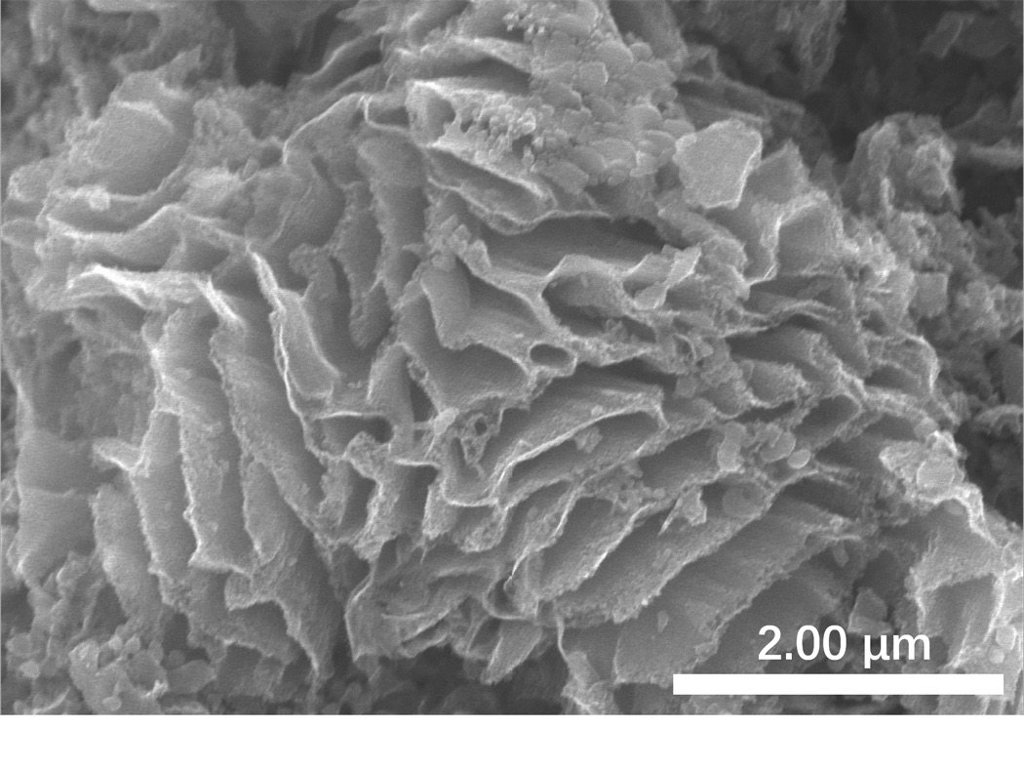Scientists at Michigan Technological University invented a method to take a material out of theory and make it into a real electrode.
A little sodium goes a long way. At least that's the case in carbon-based energy technology. Specifically, embedding sodium in carbon materials can tremendously improve electrodes—which could streamline solar cell and supercapacitor production.
A research team led by Yun Hang Hu, the Charles and Carroll McArthur Professor of materials science and engineering at Michigan Tech, created a brand-new way to synthesize sodium-embedded carbon nanowalls. Previously, the material was only theoretical and the journal NanoLetters (DOI: 10.1021/acs.nanolett.6b04742) recently published this invention.
Better than Graphene
High electrical conductivity and large accessible surface area, which are required for ideal electrode materials in energy devices, are opposed to each other in current materials. Amorphous carbon has low conductivity but large surface area. Graphite, on the other hand, has high conductivity but low surface area. Three-dimensional graphene has the best of both properties—and the sodium-embedded carbon invented by Hu at Michigan Tech is even better.
"Sodium-embedded carbon's conductivity is two orders of magnitude larger than three-dimensional graphene," Hu says. "The nanowall structure, with all its channels and pores, also has a large accessible surface area comparable to graphene."
This is different from metal-doped carbon where metals are simply on the surface of carbon and are easily oxidized; embedding a metal in the actual carbon structure helps protect it. To make such a dream material, Hu and his team had to create a new process. They used a temperature-controlled reaction between sodium metal and carbon monoxide to create a black carbon powder that trapped sodium atoms. Furthermore, in collaboration with researchers at University of Michigan and University of Texas at Austin, they demonstrated that the sodium was embedded inside the carbon instead of adhered on the surface of the carbon.
Only a minuscule amount of embedded sodium is required to result in high conductivity for large surface area carbon, which makes it a promising electrode material for energy devices like dye-sensitized solar cells and supercapacitors.
Solar Cells
Dye-sensitized solar cells (DSSCs) are an alternative to the commonly used silicon-based panels for electricity production from sunlight. Platinum is the current counter electrode material of choice for DSSCs.
"However, sodium-embedded carbon is both less expensive and more efficient than platinum in these solar cells," Hu says.
In the dye-sensitized solar cell world, every tenth of a percent counts in making devices more efficient and commercially viable. In the study, the platinum-based solar cell reached a power conversion efficiency of 7.89 percent, which is considered standard. In comparison, the solar cell using Hu's sodium-embedded carbon reached efficiencies of 11.03 percent.
Supercapacitor
Supercapacitors can accept and deliver charges much faster than rechargeable batteries and are ideal for cars, trains, elevators and other heavy-duty equipment. The power of their electrical punch is measured in farads (F); the material's density, in grams (g), also matters.
Activated carbon is commonly used for supercapacitors; it packs a 71 F g-1 punch. Three-dimensional graphene has more power with a 112 F g-1 measurement. Sodium-embedded carbon knocks them both out of the ring with a 145 F g-1 measurement. Plus, after 5,000 charge/discharge cycles, the material retains a 96.4 percent capacity, which indicates electrode stability.
Batteries and Beyond
The next step in the research will be to assess the material in other energy devices.
"In our research, we work with both theory and experiments," says Hu. "This gives us a unique opportunity to create new materials."
Hu says innovation in energy devices is in great demand. He sees a bright future for sodium-embedded carbon and the improvements it offers in solar tech, batteries, fuel cells, and supercapacitors.
Michigan Technological University is an R1 public research university founded in 1885 in Houghton, and is home to nearly 7,500 students from more than 60 countries around the world. Consistently ranked among the best universities in the country for return on investment, Michigan's flagship technological university offers more than 185 undergraduate and graduate degree programs in science and technology, engineering, computing, forestry, business, health professions, humanities, mathematics, social sciences, and the arts. The rural campus is situated just miles from Lake Superior in Michigan's Upper Peninsula, offering year-round opportunities for outdoor adventure.






Comments